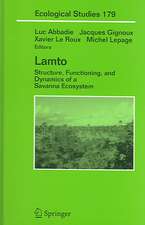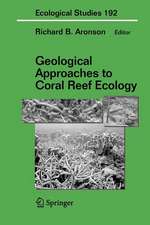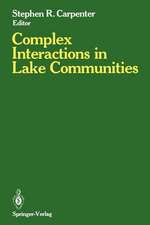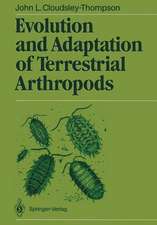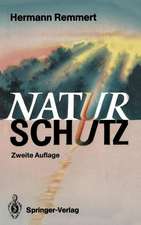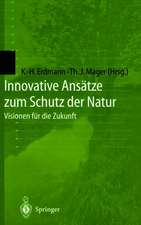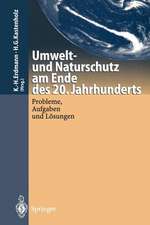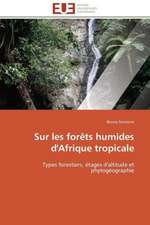Reviving the Dying Giant: Integrated Water Resource Management in the Zayandeh Rud Catchment, Iran
Editat de Shahrooz Mohajeri, Lena Horlemannen Limba Engleză Hardback – 25 iun 2017
| Toate formatele și edițiile | Preț | Express |
|---|---|---|
| Paperback (1) | 782.59 lei 38-44 zile | |
| Springer International Publishing – 31 iul 2018 | 782.59 lei 38-44 zile | |
| Hardback (1) | 935.24 lei 3-5 săpt. | |
| Springer International Publishing – 25 iun 2017 | 935.24 lei 3-5 săpt. |
Preț: 935.24 lei
Preț vechi: 1140.53 lei
-18% Nou
Puncte Express: 1403
Preț estimativ în valută:
179.04€ • 184.13$ • 148.53£
179.04€ • 184.13$ • 148.53£
Carte disponibilă
Livrare economică 29 ianuarie-12 februarie
Preluare comenzi: 021 569.72.76
Specificații
ISBN-13: 9783319549200
ISBN-10: 3319549200
Pagini: 268
Ilustrații: X, 268 p. 120 illus., 105 illus. in color.
Dimensiuni: 155 x 235 mm
Greutate: 0.61 kg
Ediția:1st ed. 2017
Editura: Springer International Publishing
Colecția Springer
Locul publicării:Cham, Switzerland
ISBN-10: 3319549200
Pagini: 268
Ilustrații: X, 268 p. 120 illus., 105 illus. in color.
Dimensiuni: 155 x 235 mm
Greutate: 0.61 kg
Ediția:1st ed. 2017
Editura: Springer International Publishing
Colecția Springer
Locul publicării:Cham, Switzerland
Cuprins
Introduction.- Part I: The Zayandeh Rud Catchment.- Water Resources in Iran and the Reasons for Establishing River Basin Organizations.- Water Management in the Zayandeh Rud Basin.- Part II: Developing a Common Understanding of IWRM and its Requirements.- Participation in Water Management in Iran.- Towards a Sustainable Advanced Training Sector in Iran.- Part III: Current and Future Water Availability and Use.- Current and Future Agricultural Water Use in the Zayandeh Rud Catchment.- Current and Future Industrial Water Use in the Zayandeh Rud Catchment.- Water Use for Drinking Water and Reuse of Treated Wastewater.- Development of a Water Quality Monitoring Sys-tem for the Zayandeh Rud River.- Obstacles and Opportunities for Iran’s Wastewater Sector Development.- Vulnerability Analysis of Farmers in the Roodasht Region, Iran.- Part IV: Development of Necessary Tools for IWRM and Results.- Introduction: The Water Management Tool WMT.- Climate Change Impacts on Some Hydrological Variables in the Zayandeh-Rud River Basin, Iran.- Application of the Hydrological Model SWAT in the Zayandeh Rud catchment.- Application of the FEFLOW Groundwater Model in the Zayandeh Rud Catchment.- Application of MIKE Basin in the Zayandeh Rud Catchment.
Notă biografică
Dr. Shahrooz Mohajeri is the managing director of the inter 3 Institute for Resource Management in Berlin and the IWRM Zayandeh Rud project leader. Born in Isfahan and educated in Iran and Germany, he is an internationally recognized expert for sustainable resource management with a focus on technological, economic and political feasibility. Dr. Mohajeri has been promoting scientific and business cooperation between Iran and Germany for more than 15 years. He is also a member of the German Water Partnership board and the leader of GWP’s Iran section.Lena Horlemann is a researcher at the inter 3 Institute for resource management and one of the IWRM Zayandeh Rud project coordinators. She holds a master’s degree in Southeast Asian Studies and Agronomy and her professional background also includes global governance and development cooperation. She has worked on environmental and water management issues for more than 10 years, for example in IWRM projects in Mongolia and now Iran. Her research focuses on social and institutional aspects of IWRM implementation.
Textul de pe ultima copertă
This book presents the results of an interdisciplinary research project that was set up to introduce Integrated Water Resources Management (IWRM) at the Zayandeh Rud, Central Iran’s most important river. As a result of climate change and a missing overall concept for sustainably managing water resources, the river has repeatedly dried up in recent years. Not only has water stress led to severe conflicts among the water using sectors and neighboring provinces, it also threatens important ecosystems in the region. Thus, the joint development of an IWRM concept for the Zayandeh Rud catchment was the main objective of the project. Comprehensive technological and non-technological measures – ranging from wastewater reuse to capacity development – were adjusted to local conditions and implemented in order to initiate an integrated, iterative IWRM process. The design of a technology-based Water Management Tool (WMT) served as the connective link to create trust, cooperation and coordination among the stakeholders and institutions.
Caracteristici
First book with an interdisciplinary perspective on Iran’s water sector
Relevant for scientists and practitioners working on water management in arid countries
Shows how technological and non-technological methods can be integrated in a meaningful way
Relevant for scientists and practitioners working on water management in arid countries
Shows how technological and non-technological methods can be integrated in a meaningful way

